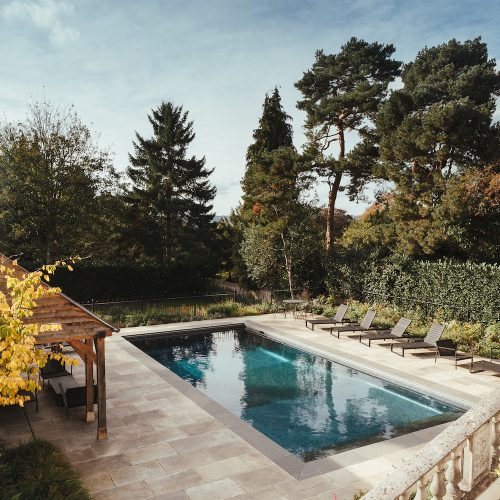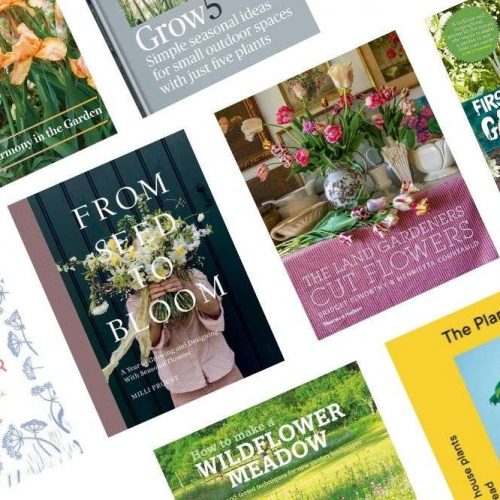Garden goddess: MAY!
Gardenscape has the lowdown on what we should be doing in the garden to make it picture-perfect for summer.

It feels like it’s taken a long time to get here, but for many, this month is their favourite when it comes to appreciating the great outdoors. The garden looks greener, the trees have leaves again and two Bank Holidays call for finally making use of the garden furniture and the barbecue.

But, before you recline in the hammock with a Pimms in hand, there’s lots to be done this month to get your garden ready for the summer. With everything beginning to grow and the warmer weather encouraging those shoots and buds to thrive, there’s also a double edged sword (or, perhaps a double edged trowel). The increased growth of the flowers and plants also means the grass needs cutting more frequently and those pesky weeds need keeping at bay.
So we asked the experts – Kent-based Gardenscape who deliver a wide range of top quality landscaping and gardening products – which tasks to tackle outdoors this month:
Lawn and order
It’s good practice to work on your lawn now to help encourage healthy growth. May sees longer daylight hours and warmer soil than in previous months, providing the perfect conditions for the grass to grow. Apply a nitrogen-rich summer feed after mowing – the high levels of nitrogen will help to promote spring growth.
Stay hydrated
We don’t just mean you quenching your thirst in the garden, this month you’ll need to pay extra attention to your plants and ensure they’re getting plenty of moisture. Get into the habit of watering regularly, and don’t forget to give some extra love to thirsty crops such as courgettes, cucumbers and tomatoes, especially if you’re currently growing these in a greenhouse where it’s much warmer. Ensure soil is kept moist but don’t overdo it – you don’t want it to become waterlogged.
Hanging on
This month is the prime time to plant up hanging baskets, so that they’ll be abundant with flowers come summertime. Choose a mix of trailing and upright plants, and don’t forget to cut holes in your basket liner to allow the trailing plants to grow through. Once you’ve prepared the liner, fill with a multi-purpose compost which will provide the flowers with the additional nutrients they’ll need. Plant your largest flowers in the centre, add the trailing plants around the sides, and then fill any gaps with flowering plants such as verbena and petunias. Add more compost, and then hang in a sunny, sheltered spot. If the weather is still a little fickle, keep your basket in a greenhouse or shed for a few weeks until the temperature improves.
Slugging it out with the snails
You don’t want to plant all of your wonderful specimens, only to see them devoured by slugs and snails, so consider taking some steps to minimise the damage these critters can cause.
For pots, putting copper tape around the pot will stop them crossing the tape. Crushed eggshells will provide a similar barrier on your soil (but you’ll need lots of them), or try cockleshells as an alternative.
Or, depending how you feel about picking them up, when you see them, relocate them to somewhere far away from their chomping ground (and no, not your neighbours’ garden.)
Mulch ado
Much like a spa treatment for your garden, mulch can work wonders on your soil. Not only does it work to lock in your soil’s moisture, it also improves its texture and even helps to keep weeds at bay. By layering a good quality mulch over your soil, weeds will struggle to grow due to a lack of light and won’t easily be able to find their way to the soil below. Apply around 2-3 inches of mulch on top of your soil for best results.
It’s a bug’s life
At this time of year, aphids (also known as greenfly or blackfly) tend to swarm to young growth in gardens, and in large numbers can be problematic for your plants because they suck sap from plants, weakening them and can even kill them off in some instances. Some species also transfer viruses to plants – and no amount of hand washing or mask-wearing can fix this unfortunately, so these plants will need to be destroyed.
However, it’s not all bad news – a small number of aphids is unlikely to cause any issues, because birds and insects such as ladybirds will eat them from the plants. It’s only in large numbers you’ll need to be wary, so if you do spot an influx of aphids, grab the hose and wash them off – they’ll fall to the ground where other creatures can eat them. Organic pesticides can also be used to treat them, just be careful not to spritz at a time when insects such as bees are visiting the flowers.
Bedding time
Once the last frost has occurred (it’s usually best to hold off until the end of May to be sure), it’s time to fill your borders with some colour, by planting out summer bedding and half-hardy annuals including sunflowers, cosmos and nasturtiums. Bedding plants grow quickly and will produce a lot of flowers quickly, so ensure you have a good compost to really help them thrive and bring lots of lovely colours to your garden.
And, after a hard day’s work tending to the garden, you’ll definitely have earned that Pimms…
Gardenscape, The Wharf, Rye Road, Newenden TN18 5QG, Tel: 0800 854663, gardenscapedirect.co.uk
You may also like

















